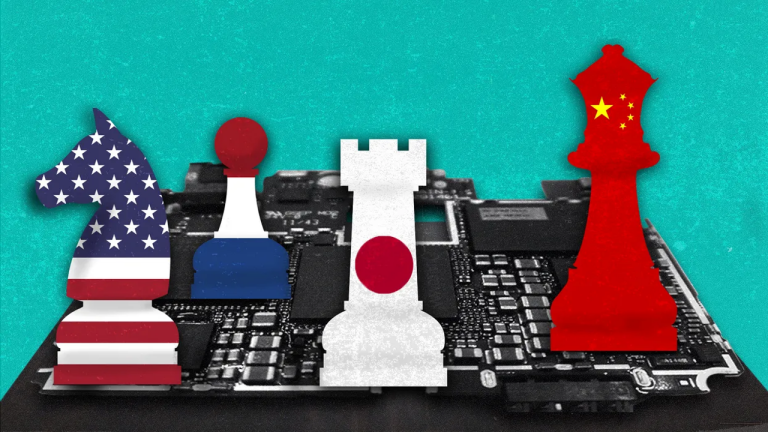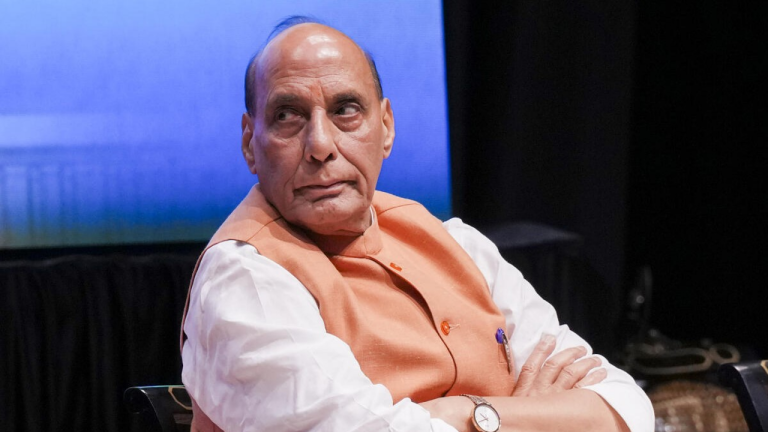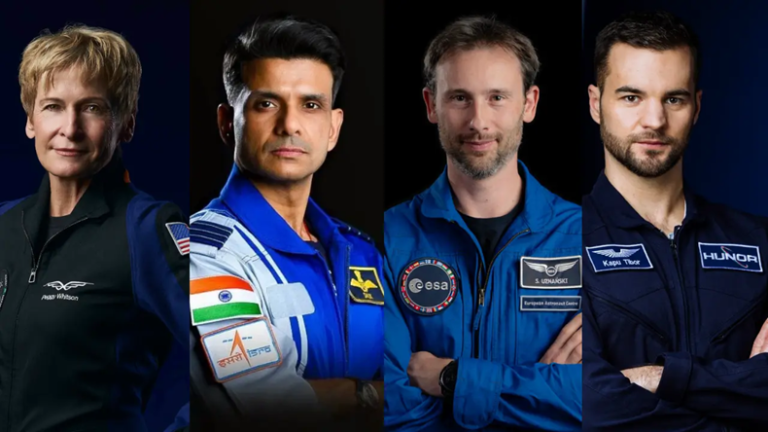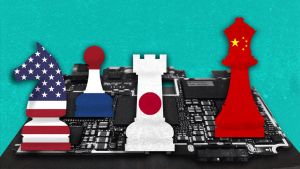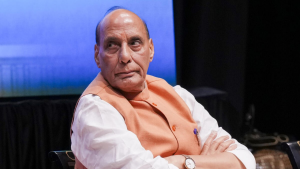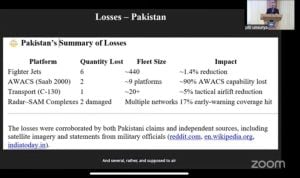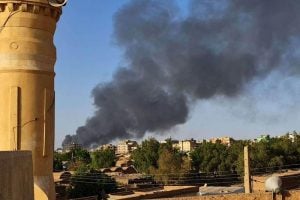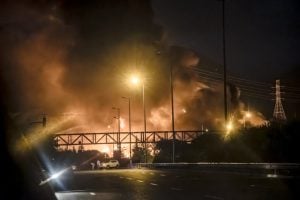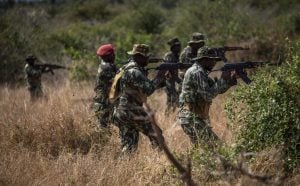Phase 2 of Exercise MALABAR 2020 in Western Indian Ocean
- The second phase of Exercise Malabar 2020 will be conducted in the Northern Arabian Sea from 17 to 20 November 2020. Taking forward the synergy achieved in the recently concluded Phase 1 of Exercise Malabar 2020, which was conducted in the Bay of Bengal from 03 to 06 November 2020, this phase will involve coordinated operations of increasing complexity between the navies of Australia, India, Japan and the United States.
- Phase 2 of Exercise MALABAR 2020 will witness joint operations, centred around the Vikramaditya Carrier Battle Group of the Indian Navy and Nimitz Carrier Strike Group of the US Navy. The two carriers, along with other ships, submarine and aircraft of the participating navies, would be engaged in high intensity naval operations over four days. These exercises include cross-deck flying operations and advanced air defence exercises by MIG 29K fighters of Vikramaditya and F-18 fighters and E2C Hawkeye from Nimitz. In addition, advanced surface and anti-submarine warfare exercises, seamanship evolutions and weapon firings will also be undertaken to further enhance inter-operability and synergy between the four friendly navies.
- In addition to Vikramaditya and its fighter and helicopter air-wings, indigenous destroyers Kolkata and Chennai, stealth frigate Talwar, Fleet Support Ship Deepak and integral helicopters will also participate in the exercise, led by Rear Admiral Krishna Swaminathan, Flag Officer Commanding Western Fleet. Indigenously built submarine Khanderi and P8I maritime reconnaissance aircraft of the Indian Navy will also showcase their capabilities during the exercise.
- US Navy’s Strike Carrier Nimitz will be accompanied by cruiser Princeton and destroyer Sterett in addition to P8A maritime reconnaissance aircraft. The Royal Australian Navy will be represented by frigate Ballarat along with its integral helicopter. JMSDF will also participate in the exercise.
- The Malabar series of exercises, which began as an annual bilateral naval exercise between India and the US in 1992, has seen increasing scope and complexity over the years. The 24th edition of MALABAR, which is being presently undertaken, highlights enhanced convergence of views amongst the four vibrant democracies on maritime issues, and showcases their commitment to an open, inclusive Indo-Pacific and a rules-based international order.
India now has a dedicated drones directorate to focus exclusively on drones
- You are reading it here first: India now has a dedicated Drones Directorate that will solely focus on managing the drones ecosystem in the country. The civil aviation regulator, DGCA, obtained the permission to set up the Directorate from the Finance Ministry, and the department — to begin with — will have eight officials from the DGCA, but will be expanded over time, Amber Dubey, joint secretary at the Civil Aviation Ministry said on Monday.
- “This is a pleasant surprise since under the pandemic related austerity measures, formation of any new department undergoes extreme scrutiny. One more baby step towards making India the drone capital of the world,” Dubey wrote. At the moment it is unclear who the eight members of this department are, and we have reached out to the Civil Aviation Ministry for more details.
- An industry source told that the Directorate will have its own financial budget, which is presumably why the DGCA had to receive approval from the Finance Ministry. Another industry source said that the Directorate will help in creating more focus on the drones’ ecosystem, given that both DGCA, and the Civil Aviation Ministry have traditionally prioritised civil aviation operations over drones.
- “Getting a single function to look at all the aspects of operations is going to reduce the need for running around to get a complete picture. We see this as a much-needed focused measure where all the functions are equally motivated to do dedicated efforts on making India the drone capital of the world,” Ankit Meha, co-founder and CEO of drone maker idea Forge told in a statement.
- What the Directorate could look into: A dedicated draft legislation for drone use in the country was published in June, and the rules are currently in the draft stage, and the Directorate could look into finalising these rules.
- There is another important thing that the Directorate could look into: the multiple delays to rolling out no permission, no take-off (NPNT) support to the Digital Sky platform. India’s drone rules mandate that only NPNT-compliant drones be allowed to fly, however, given that the functionality is yet to be baked into the Digital Sky platform, this provision has rarely been fulfilled.
- How India’s drone space has changed over the last one year: The idea to set up a dedicated Drones Directorate was first proposed in 2019, by the then Civil Aviation Minister Jayant Sinha, particularly to issue guidelines for drone operations, and for handling certification of drone pilots, among other things. Since then, India has seen two different Civil Aviation Ministers in Suresh Prabhu, and the incumbent Hardeep Singh Puri; the drone ecosystem has also changed quite significantly:
Multiple drone training schools have been approved by the DGCA to train and certify drone operators — a prerequisite for obtaining a drone pilot license — and very recently had its first batch of certified drone pilots.
The DGCA has approved a third-party drone certification scheme to fast track drone certification in the country.
Insurance regulator, IRDAI, formed a working committee to look into drone insurance, and the group had already come out with a working paper. A few banks have also started offering drone insurance plans.
- While the government is building the entire infrastructure for drone use in the country, it is also slowly and steadily allowing for more drone use. The COVID-19 pandemic saw a number of state governments deploy surveillance drones for containment exercises, but even beyond the pandemic, drones are now being deployed in multiple areas — including at critical infrastructure such as thermal power plants.
PM Narendra Modi, President Xi Jinping to join BRICS summit today
- Prime Minister Narendra Modi and President Xi Jinping will be on the same platform within a week when leaders of the Brazil-Russia-India-China-South Africa (BRICS) grouping convene for a virtual summit on Tuesday to focus on economic recovery amid the Covid-19 pandemic.
- At the invitation of Russian President Vladimir Putin, Modi will join the virtual BRICS Summit with the theme “Global stability, shared security and innovative growth”.
- The summit, being held in the backdrop of the pandemic, will discuss intra-BRICS cooperation and key global issues such as reforming the multilateral system, measures to mitigate the impact of the Covid-19 crisis, and cooperation in counter-terrorism, trade, health and energy.
- This will be the second time Modi and Xi will be on the same virtual platform since the India-China border standoff emerged in May.
- On November 10, Modi and Xi participated in the virtual summit of the Shanghai Cooperation Organisation (SCO), also hosted by Russia. In an indirect reference to China’s Belt and Road Initiative, Modi had urged SCO members to respect the sovereignty and territorial integrity of countries while implementing connectivity projects.
- He had also taken a swipe at Pakistan, saying it was unfortunate that repeated attempts are being made to violate the SCO charter by raising bilateral issues. Russia had subsequently backed India’s position on this matter.
- The top leadership of India and China are expected to be on the same online platform during five meetings this month. Besides the SCO Summit on November 10, the East Asia Summit on November 14 and the BRICS Summit on November 17, the two countries will also participate in the G20 Summit during November 21-22 and the SCO council of heads of government meeting on November 30.
- In 2021, India will take over as chair of BRICS for the third time since the grouping’s inception and host the next summit.
Centre agrees to deploy 5 new CRPF battalions in Maoist-hit Bastar in a ‘bold’ move
- Accepting the demand of the Chhattisgarh government, the Union ministry of home will deploy five extra battalions of Central Reserve Police Force (CRPF) in Bastar region, officials said on Monday.
- The officials said that Chhattisgarh chief minister, in September 2020, wrote a letter to Union home minister Amit Shah and urged him for deployment of seven battalions of (CRPF) in Bastar region– sanctioned in 2018– and also for installation of mobile towers.
- “Taking cognisance of the demand, the union home minister has decided to send five battalions as soon as possible,” said a senior official privy to the development.
- The official further stated that CM Baghel wrote a letter to home minister Amit Shah, on November 12, and thanked him for accepting the demand and also made some suggestions to eradicate Maoism from Bastar region.
- “Out of the seven additional CRPF battalions allocated to the state in 2018, five battalions were immediately directed to be deployed in the Bastar region. As per the information I’ve received, a special recruitment rally for Indian Army is being considered in Bastar division in March 2021 to provide employment opportunities to the youth of Bastar while giving them a chance to render a national service. With your kind initiative on both of these subjects, we will reach a decisive edge in the anti-Naxal campaign,” Baghel stated in his letter.
- The officials posted in Bastar claimed that the impact of the five newly-deployed battalions would be incumbent on the speed and safety with which Bastar police assist in their induction in the designated places.
- “Five battalions means 30 companies, which further means that more than 20 locations would be acquired. Most of these locations are in security vacuum areas considered core areas of the Maoists. There will be strong resistance from the Maoists against CRPF acquiring advanced locations,” said an IPS officer posted in the region.
- Another intelligence officer deployed in the Bastar region said, “As all the five battalions are to be deployed in Sukma and Bijapur districts, the security forces in both districts would be tested.”
- “It seems governments (both central and state) have decided to take the battle to the end and aggressive deployment of CRPF companies can be a game changer,” he said.
SpaceX launches 4 astronauts to space, kicking off regular crew flights from the US
- Sunday’s launch follows by just a few months SpaceX’s two-pilot test flight. It kicks off what NASA hopes will be a long series of crew rotations between the US and the space station, after years of delay.
- SpaceX launched four astronauts to the International Space Station on Sunday on the first full-fledged taxi flight for NASA by a private company.
- The Falcon rocket thundered into the night from Kennedy Space Centre with three Americans and one Japanese, the second crew to be launched by SpaceX. The Dragon capsule on top — named Resilience by its crew in light of this year’s many challenges, most notably Covid-19 — was due to reach the space station late Monday and remain there until spring.
- Sidelined by the virus himself, SpaceX founder and chief executive Elon Musk was forced to monitor the action from afar. He tweeted that he “most likely” had a moderate case of Covid-19. NASA policy at Kennedy Space Center requires anyone testing positive for coronavirus to quarantine and remain isolated.
- Sunday’s launch follows by just a few months SpaceX’s two-pilot test flight. It kicks off what NASA hopes will be a long series of crew rotations between the US and the space station, after years of delay. More people means more science research at the orbiting lab, according to officials.
- “This is another historic moment,” NASA Administrator Jim Bridenstine said Friday. But he noted: “Make no mistake: Vigilance is always required on every flight.”
- The flight to the space station — 27 1/2 hours door to door — should be entirely automated, although the crew can take control if needed.
- With Covid-19 still surging, NASA continued the safety precautions put in place for SpaceX’s crew launch in May. The astronauts went into quarantine with their families in October. All launch personnel wore masks, and the number of guests at Kennedy was limited. Even the two astronauts on the first SpaceX crew flight stayed behind at Johnson Space Centre in Houston.
- Vice President Mike Pence, chairman of the National Space Council, travelled from Washington to watch the launch. Outside the space centre gates, officials anticipated hundreds of thousands of spectators to jam nearby beaches and towns.
- NASA worried a weekend lift-off — coupled with a dramatic night time launch — could lead to a super spreader event. They urged the crowds to wear masks and maintain safe distances. Similar pleas for SpaceX’s first crew launch on May 30 went unheeded.
- The three-men, one-woman crew led by Commander Mike Hopkins, an Air Force colonel, named their capsule Resilience in a nod not only to the pandemic, but also racial injustice and contentious politics. It’s about as diverse as space crews come, including physicist Shannon Walker, Navy Cmdr. Victor Glover, the first Black astronaut on a long-term space station mission, and Japan’s Soichi Noguchi, who became the first person in almost 40 years to launch on three types of spacecraft.
- They rode out to the launch pad in Teslas — another Musk company — after exchanging high-fives and hand embraces with their children and spouses, who huddled at the open car windows. Musk was replaced by SpaceX President Gwynne Shotwell in bidding the astronauts farewell.
- Besides its sleek design and high-tech features, the Dragon capsule is quite spacious — it can carry up to seven people. Previous space capsules have launched with no more than three. The extra room in the capsule was used for science experiments and supplies.
- The four astronauts will be joining two Russians and one American who flew to the space station last month from Kazakhstan.
- The first-stage booster — aiming for an ocean platform several minutes after lift-off — is expected to be recycled by SpaceX for the next crew launch. That’s currently targeted for the end of March, which would set up the newly launched astronauts for a return to Earth in April. SpaceX would launch yet another crew in late summer or early fall.
- SpaceX and NASA wanted the booster recovered so badly that they delayed the launch attempt by a day, to give the floating platform time to reach its position in the Atlantic over the weekend following rough seas.
- Boeing, NASA’s other contracted crew transporter, is trailing by a year. A repeat of last December’s software-plagued test flight without a crew is off until sometime early next year, with the first astronaut flight of the Starliner capsule not expected before summer.
- NASA turned to private companies to haul cargo and crew to the space station, after the shuttle fleet retired in 2011. SpaceX qualified for both. With Kennedy back in astronaut-launching action, NASA can stop buying seats on Russian Soyuz rockets. The last one cost $90 million.
- The commander of SpaceX’s first crew, Doug Hurley, noted it’s not just about saving money or easing the training burdens for crews.
- “Bottom line: I think it’s just better for us to be flying from the United States if we can do that,” he told.
QUICK REVIEW
- Which among these Indian warships is not a part of Malabar 20 Phase II?
- INS Kolkata
- INS Chennai
- INS Talwar
- INS Mumbai
ANSWER: D
- When was Malabar series of exercise started?
- In 1992 with the US
- In 1993 with Japan
- In 1994 with Australia
- In 1995 with the US
ANSWER: A
- Virtual BRICS Summit 2020 theme
- Revitalizing Economies after Covid-19 Pandemic
- Cultural and Economic Integrity of Future Generation
- Global stability, shared security and innovative growth
- Defence Manufacturing and Economic Prowess
ANSWER: C
- SpaceX launched four astronauts to the International Space Station on Sunday on the first full-fledged taxi flight for NASA by a private company. They contain
- 3 Americans and 1 Japanese
- 3 Japanese and 1 American
- 2 Japanese and 2 American
- All are Americans
ANSWER: A
- India’s drone rules mandate that only NPNT-compliant drones be allowed to fly. NPNT means
- No power, no take-off
- No policy, no take-off
- No progress, no take-off
- No permission, no take-off
ANSWER: D





